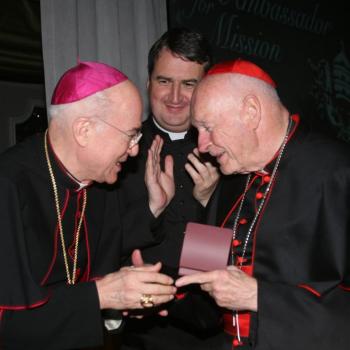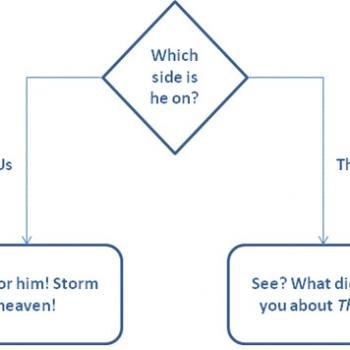which seems pretty sound to me. Discuss:
The abuse crisis in the church requires three action plans moving forward. The first is to ensure justice and restitution to victims. The second is to remove the bad actors which may include some bishops who are particularly egregious for cover-up. The third requires an approach to prevention of future abuse. It is this third area that has the greatest interest to me. Currently, the training and policies are best practices. However, if questions exist on the implementation of these best practices, then further safeguards are needed. While bureaucratic, the best safeguards usually demand more audits and supervision.
For prevention, each institution requires a three-pronged approach, the success of which all binds a diocese and institution to liability policies and increased or decreased costs depending on compliant performance
One is a system of written policies and procedures that demonstrate both training, incorporation of the training plans into written policies for activities, and the absolute demand that without such, revocation of the license and liability coverage for youth activities will occur. This includes sign-in sheets, supervisors separate from activities to monitor coverage, two-deep leadership like Scouting, among other duties for participation in a youth activity.
Second, the nation needs a phone call-in system for concerns and allegations of abuse, monitored by a national group. This phone call-in must be well-funded, must respond to not only allegations of abuse, but must also respond to allegations of unsafe activities. If Mr. Youth Minister is having small pizza parties with 2-3 kids and this is outside the policies of the institution, the parent, guardian, or youth needs to call. This decentralizes the responsibility for reporting and also centralizes the monitoring beyond over-extended pastors. The Ethics Hotline report (or some other name) would be investigated by the diocese and then the report sent back to the national body.
Finally, a separate policing infrastructure needs to be in place. Youth Protection Officers answerable to a Chaired Committee in each diocese need to be hired and responsible for ensuring activities are compliant and safe in each institution (parish, CYO, high school). Youth Protection Officers are answerable in a dotted line to pastors and bishops but in a direct line to the Committee and the National Body of Youth Protection. Each Committee in each diocese certifies youth programs at institutions, manages complaints, hears and rules on issues identified from the field and from the Ethics Hotline. The Committee can issue revocations of licenses to run youth programs. They issue or approve Corrective Action Plans for improved systems, and they determine whether an institution gets liability coverage for activities. Failures are reported both to the bishop and to the National Body of Youth Protection. The National Body oversees the functions of the Diocesan Committees, de-certifying them and their diocesan programs should they have failures. Such failures results in loss of liability coverage.
At no point does anyone in this system do anything more with an allegation of abuse other than report it to the police or youth protection agency. These systems are to ensure such reporting and then subsequent removal and management of personnel alleged to have abused someone have occurred in a proper format, not to rule on whether abuse occurred. Rapid, decisive, policy-driven responses are the metrics for grading these systems.
Clergy are not members of any of these positions, nor does the National Body answer to anyone other than insurance companies.
These types of processes would enhance the identification of failures to organize systems and assist in transparent, supervised, coordinated responses to prevent sexual assault and sexual abuse in American Catholic institutions.










